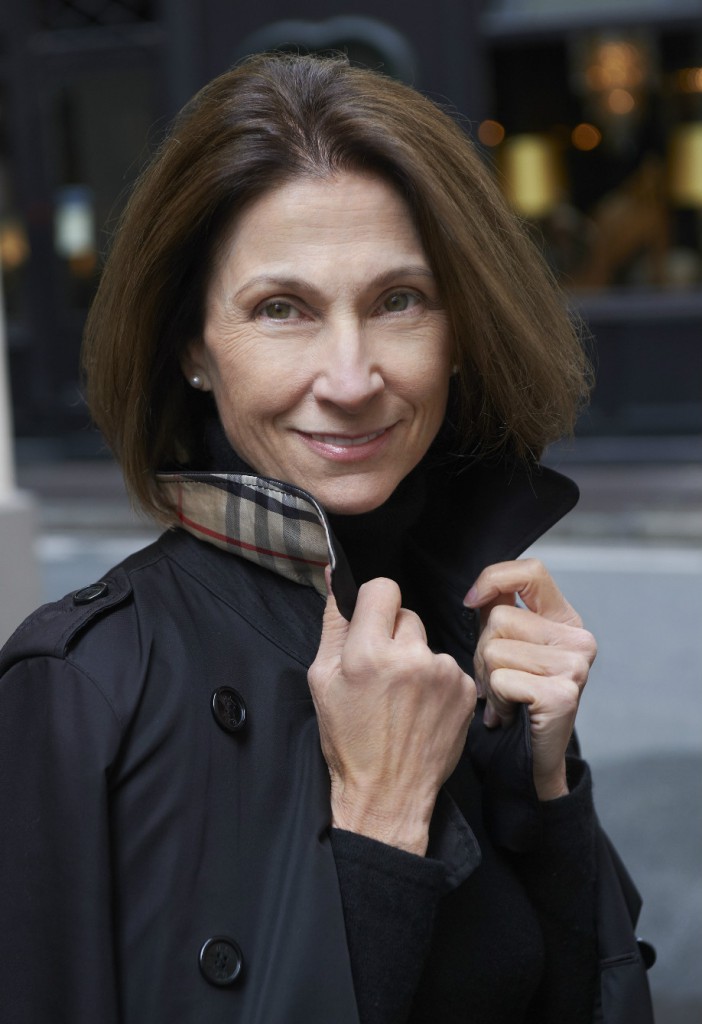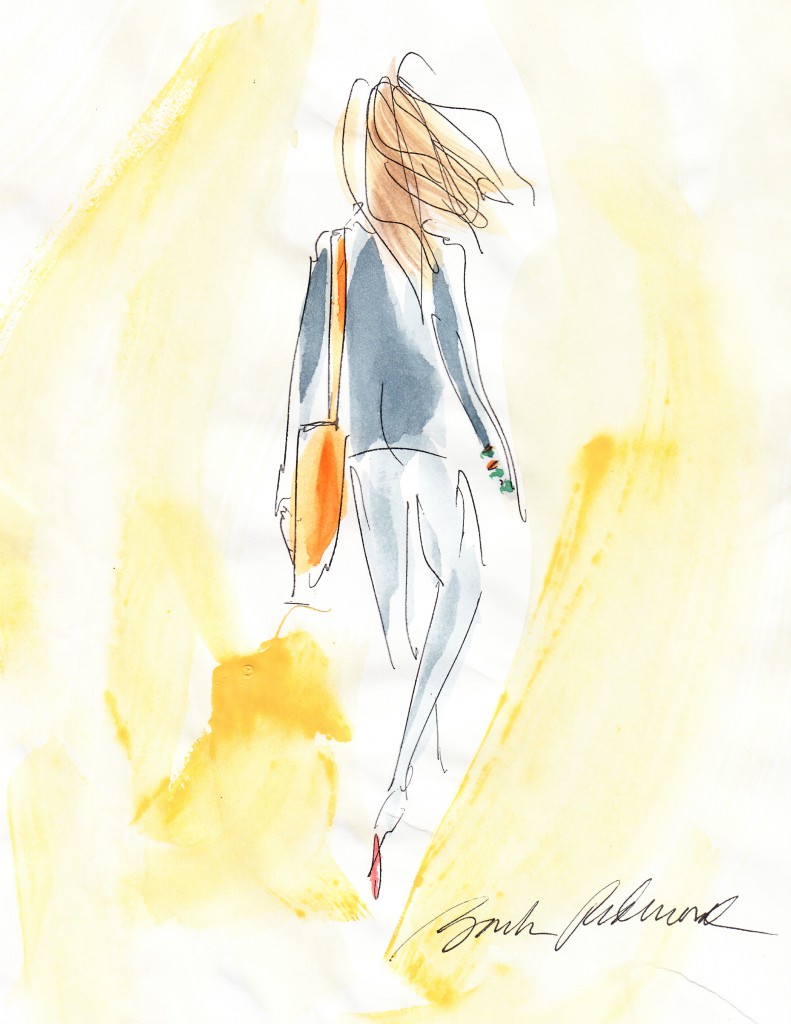Travel Diaries: Unpredictably Paris (part two)
12 Thursday Jun 2014
Tags
City of Light, Flaneur, flaneuse, France, French waiters, Frenchmen, Frenchwomen, Georges Braque retrospective Grand Palais Paris, La Dame aux Camelias Paris Opera, Paris, Paris opera, Parisians, walking in Paris
Share it
By Barbara Redmond
(Part One) Getting a taxi at rush hour in Paris is not easily done, and, once aboard, speeding through the streets proves to be a death defying game. I’d rather walk. From Place de Madeleine to the Grand Palais I took the most expedient route—straightaway on rue Royale to Place de la Concorde at the Obelisque in its square. From there, I walked west on avenue des Champs-Élysées, where I would reach Place Clemenceau with its view of the Grand Palais.
L’oiseau noir et l’oiseau blanc, a painting by Georges Braque, was displayed on a large, oversized poster in front of the Grand Palais. Painted in 1960, the canvas of flying birds, one black, one white, against a colorful background of pink, yellow and grey announced the exhibit; the graphic itself nearly as tall as the street lamp overhead. I studied the majestic birds, which appeared to shimmer in the soft, wavering light, its cool-grey background shifting to blues and back to greys. The pinks and yellows dissolving into shades of amber: the colors of Paris changing from day to night. To the east, above the Obelisque, the sky was beginning to gradate from azure toward a bluish-green hue. A heady blend of roses and greens, carried by a gust of wind from the Seine, quickly dissolved into thin air. The impressions, themselves, were a flawless introduction of the retrospective to come.
Friday evening’s ballet was superb, and following the performance I was drawn en masse from the Paris Opéra across the square to one of several taxi stands nearby. A procession of taxi cabs materialized quickly, arriving and departing in clusters of five from the stand where I waited; clustered either because of the signal lights from the opposite corner, or from passengers who seized door handles simultaneously and in unison, eager for a post-show dinner—the custom in Paris. I gripped the door handle of the third cab in front of me and leapt in, keenly aware of its motion turning away from the curb. I, too, was famished and eager to surrender to food.
I was at the atrium bar at Le Grand hotel across from the opera before the ballet with my friend, sipping champagne and spearing olives with a pick. The food at the apartment included a bottle of Badoit still water, Maille Dijon mustard, Le Beurre Bordier, cream, and a very expensive, small 35ml bottle of olive oil from France. I had no interest in a late-night meal at a restaurant and requested the driver to stop his cab at the end of my block on rue de Vaugirard, near the Luxembourg gardens, where I had rented for the past month. From the corner, I could walk to Proxi, a small grocery on a nearby street. It was quiet. Residents and sightseers no longer crowded the boulevards or cut through the side streets. It was dark, even with the occasional window whose brightness filtered onto the sidewalks and periodic street lamps that lit up the sky. The sound of my heels across the paving stones broke through the darkness and fell into a series of moves as I tried out a plié and arabesque now and then assuming postures to match the light, fluid movements of the dancers in La Dame aux Camélias. And to the piano music by Chopin; Ballade No. 1, every note of which I once knew by heart. I slid into character watching my shadow moving about me reaching several feet, nearly doubling my height, and decreasing radically to no more than an inch.
At the dining room table in the apartment (my make-shift desk), I pushed aside the laptop computer, organized stacks of guidebooks, a coffee cup full of pens, pencils and brushes, sketchbooks and tablets, watercolor paints, and an odd assortment of receipts, brochures and postcards, still yet to be mailed. Adjusting a vase of roses to block out the arranged clutter, I set a place for myself. Through the open windows by the table, I could hear the sounds of conversation, in French, and laughter from the courtyard below as I prepared dinner; the private tête-à-tête from the enclosure was pleasing to the ear. As I put together a meal from the additional items purchased at Proxi, I began by layering thick slices of ripened tomato (cut, leaving the skin intact) onto a serving plate and drizzled each piece with the very expensive oil, a scattering of coarse Fleur de Sel de Guérande and freshly cracked dried peppercorns—and sat down to eat. Once back in the kitchen, I cracked two good free-range eggs with bright-orange yolks into a shallow bowl, adding some cream and mixed with a fork, folding in a pinch of salt, a few grinds of peppercorns and finely chopped herbs: chervil, tarragon and chives. When a generous amount of the butter foamed in the heated skilled, I spread the mixture in the pan and swirled it around; then folded it over when it was still wet inside and slid the omelet onto a plate. As I ate, I sketched on loose sheets of paper, uncomplicated drawings of little importance. Interpretations of something or other, simplified, exaggerated: a tomato, an omelet, the cup full of brushes and tray of figs grown in France unwrapped from their square of brown paper and sitting on top. I removed the dishes to the sink and returned with a Basque sheep’s milk cheese to finish my meal—with the figs. I made drawings of figs, turning each to find their most interesting side—a dent here or there, misshapen appearance or marks to the skin. The sketches were stacked and I set them aside with the rest of the clutter. I’ve never seen them again and figure I must have left them behind or unknowingly given them up to the streets of Paris when I emptied my sac.
Acknowledgements: Iona Davidson, student of French and Italian at the University of Oxford, England, and English editor for A Woman’s Paris, and Natalie Ehalt, Bilingual Music Specialist at Hiawatha Academies, Minneapolis, MN, and Editorial Manager and writer for A Woman’s Paris.
Unpredictably Paris (part one)
Acknowledgements: Iona Davidson, student of French and Italian at the University of Oxford, England, and English editor for A Woman’s Paris, and Natalie Ehalt, Bilingual Music Specialist at Hiawatha Academies, Minneapolis, MN, and Editorial Manager and writer for A Woman’s Paris.
 Barbara Redmond, publisher of A Woman’s Paris®, is a long-time Francophile and travels to Paris every chance she gets. Her stories about Paris and France have been published in AWP® and republished, with permission, by other blogs and publications. Barbara has presented programs on French fashion and food, and has been a guest speaker for students planning their study abroad. She serves as an advisory board member at the University of Minnesota College of Design and is an advisory board member of the French-American Heritage Foundation MN, and an active student mentor. Barbara has been recognized for excellence in art by international and national organizations and publications. Prints of her fine art paintings are in collections in Europe and North America and are available for purchase.
Barbara Redmond, publisher of A Woman’s Paris®, is a long-time Francophile and travels to Paris every chance she gets. Her stories about Paris and France have been published in AWP® and republished, with permission, by other blogs and publications. Barbara has presented programs on French fashion and food, and has been a guest speaker for students planning their study abroad. She serves as an advisory board member at the University of Minnesota College of Design and is an advisory board member of the French-American Heritage Foundation MN, and an active student mentor. Barbara has been recognized for excellence in art by international and national organizations and publications. Prints of her fine art paintings are in collections in Europe and North America and are available for purchase.
You may also enjoy A Woman’s Paris® post
Joan De’Jean’s “How Paris Became Paris” – Capital of the Univers (excerpt). How Paris Became Paris: The Invention of the Modern City by acclaimed author Joan DeJean. Paris has been known for its grand boulevards, magnificent river views, and endless shopping for longer than one might think. While Baron Haussmann is usually credited as being the architect of the Paris we know today, with his major redevelopment of the city in the 19th century, Joan DeJean reveals that the Parisian model for urban space was in fact invented two centuries earlier. Joan is the author of nine books on French literature, history, and material culture, including most recently The Age of Comfort: When Paris Discovered Casual and the Modern Home Began and The Essence of Style: How the French Invented High Fashion, Fine Food, Chic Cafés, Style, Sophistication, and Glamour.
C’est normal!: the French philosophy and their genuine politeness. Dana Wielgus takes us on a journey through France—from Paris to Toulon—and successfully debunks the debatable stereotypes some Americans are fed about people of different cultures.
Les grandes vacances: The grand getaway to summer’s beaches, mountains and countryside, by French woman Bénédicte Mahé who explains the importance of vacation breaks to the French and why they are truly “les grandes vacances” (the big vacation). Including some of Bénédicte’s film suggestions that capture the essesnce of the French vacances.
How to find a (suitable) place in Paris, and other miscellaneous information, by French woman from Brittany, Bénédicte Mahé, who is in her mastère-spécialisé final trimester doing an internship in Paris. Bénédicte shares with students how to find a place in Paris. (French)
Oh, so French! Crossing to the other side.Paris-based writer Shari Leslie Segallshares her observations of becoming a little bit French and writes: “To a greater or lesser degree, whether you expected to or not, one day you realize that you’re crossing to the other side.” She offers a very incomplete list of how you know when you’ve arrived. (First published in FUSAC.FR July 5, 2013.)
Text copyright ©2014 Barbara Redmond. All rights reserved.
Illustration copyright ©2013 Barbara Redmond. All rights reserved.
barbara@awomansparis.co



2 comments
Robin said:
June 12, 2014 at 8:41 pm
Dear Ms Redmond
I enjoy all the offerings on AWP, but I most especially enjoy your articles. You have a way of capturing a scene or conveying mood. I have never (yet) been to Paris, though I long to see it. Your writing helps me to see it with my mind’s eye and for this I say “Thank You!”.
Robin Beatty
A Woman’s Paris™ said:
June 12, 2014 at 9:12 pm
Dear Robin,
Thank you for the kind words, I’m deeply touched. There are so many different ways to reflect on Parisian and French culture –– from visiting Paris and walking its streets to enjoying its art, music, literature and cuisine. I’m thrilled that, in some small way, my chronicles of travels in Paris have provided yet another view.
With warmest regards,
Barbara Redmond
Publisher, A Woman’s Paris
barbara@awomansparis.com